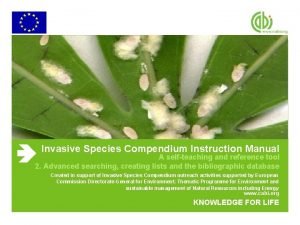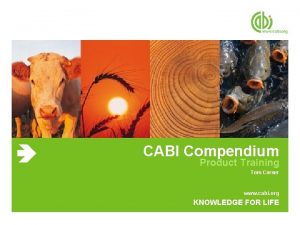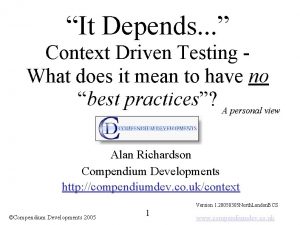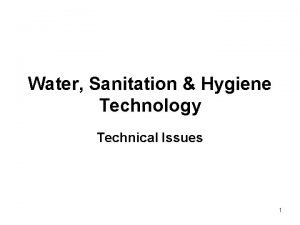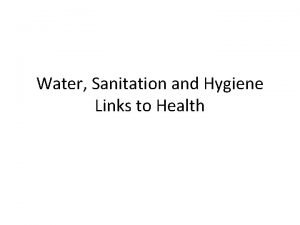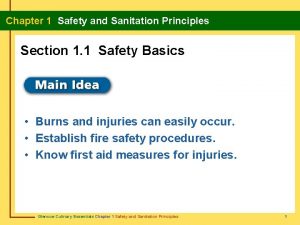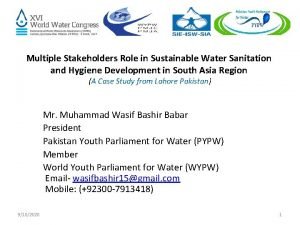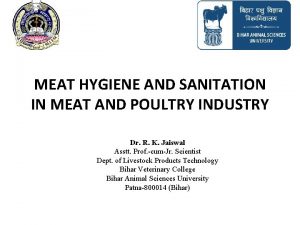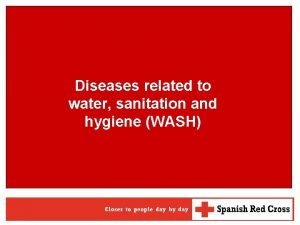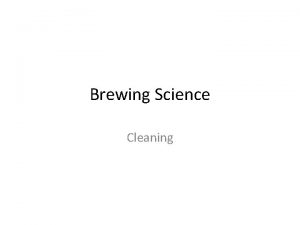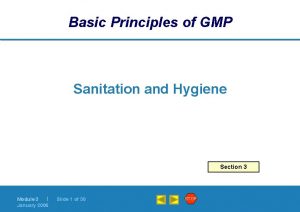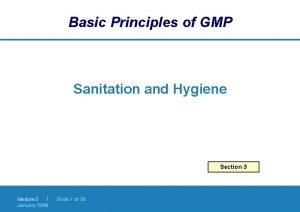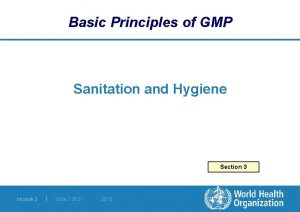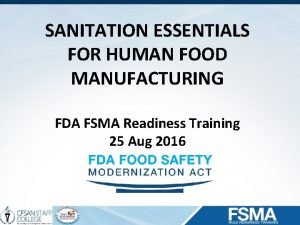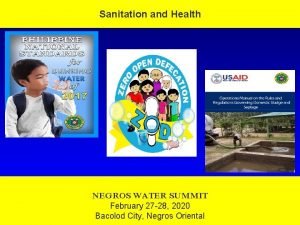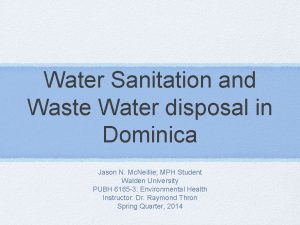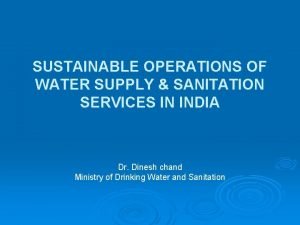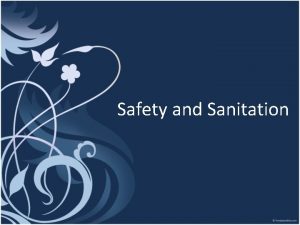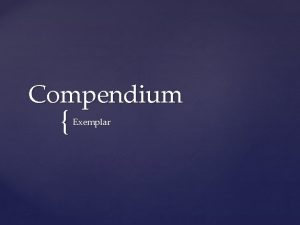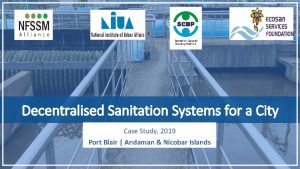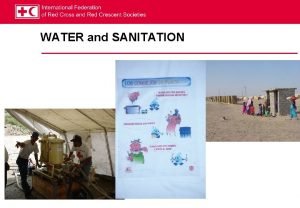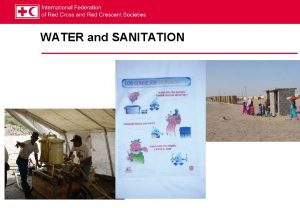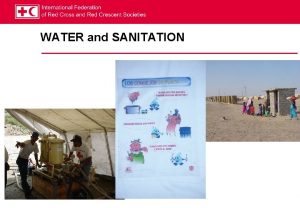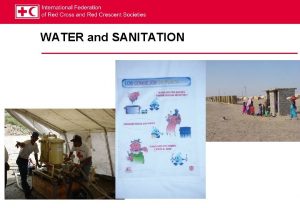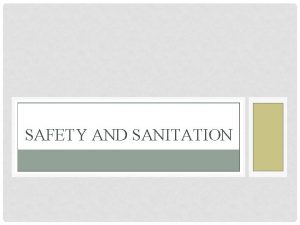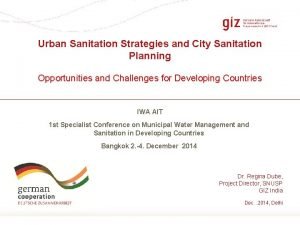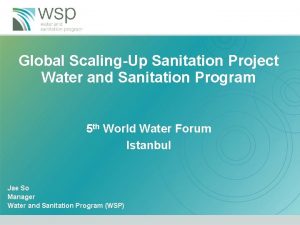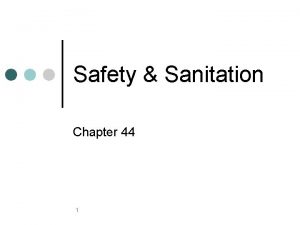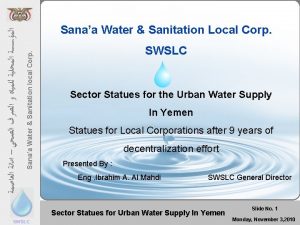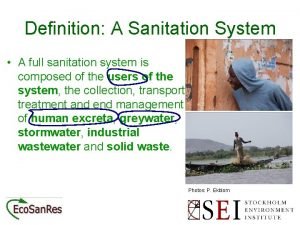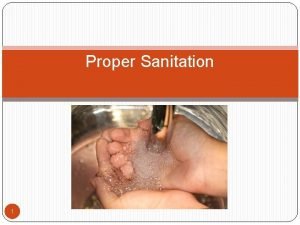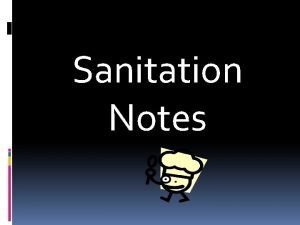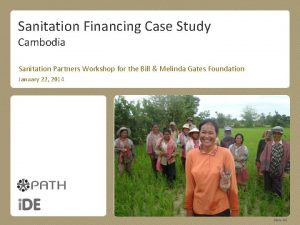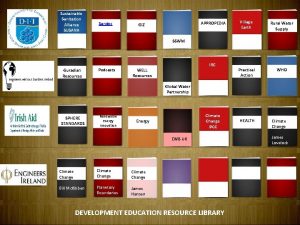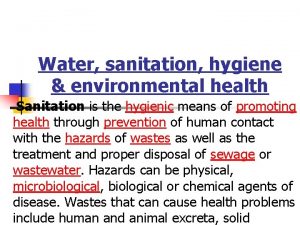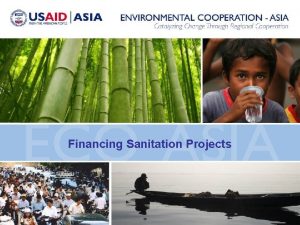Introduction to the Compendium of Sanitation Systems and


























- Slides: 26

Introduction to the Compendium of Sanitation Systems and Technologies

Rationale § CLUES planning process is based on informed-decision making § Informed decision-making is only possible if information is well-ordered and structured § Abundant information exists about sanitation technologies, but it is not easily accessible and understandable by relevant stakeholders. § The „Compendium“ pulls together all relevant information on sanitation systems and technologies, enabling informed decision-making in sanitation planning. § It emphasizes the importance of a systems approach to sanitation planning (rather than a technology focus)

Goal of the Compendium § Expose the user to a broad range of sanitation systems and technologies § understand work with the system concept § Compile and compare different technologies Show possibilities apart from sewers 3 Sa nde

Parts of the Compendium § Inputs/Products § Functional Groups § System Templates § Technology Information Sheets

Target users of the Compendium Engineers, planners and other professionals … § who are familiar with sanitation technologies and processes; § with well-developed awareness of the context and priorities of the community and other stakeholders; § with interest in learning more about alternative or novel technologies which may not be yet applied in the local context. Non-experts“ interested in sanitation systems and technologies, their advantages and disadvantages Meant to be used as part of a Participatory Planning Approach (Step 5 of CLUES) 5

Structure of the Compendium Part 1: Sanitation System Templates 6 Part 2: Technology Information Sheets

Products • Refer: page 11 • Products include: Human wastes, products for transport, additional products (toilet paper, green organic waste), output products (feacal sludge, biogas) • 19 different Products defined • System choice will depend on the Products that are generated/ required /desired 7

Functional Groups • Refer: page 13 • Functional Groups are groupings of technologies which perform the same function • 5 different Functional Groups defined • Every technology belongs to a Functional Group (colour-coded) 8

System Templates • Refer: page 16 -32 • System Templates show logical combinations of Technologies which can be linked to form a system • 8 different System Templates defined: from which 100 s of Systems can be built • Templates are built using Products and Technologies from Functional Groups 9

Products 10

Functional Groups 11

12

13

Technology Label Link to Systems Technology Code 14

15

Management Level Application Level Input/ Output Products 16

17

18

19

20

21

22




Thank you!
 Compendium of sanitation systems and technologies
Compendium of sanitation systems and technologies Distraneurin compendium
Distraneurin compendium Invasive species compendium
Invasive species compendium Pregabalion
Pregabalion Cabi compendium
Cabi compendium Cavilon creme compendium
Cavilon creme compendium Flamigel compendium
Flamigel compendium Ddi compendium
Ddi compendium Stages of god's revelation
Stages of god's revelation Sanitation and hygiene
Sanitation and hygiene Sanitation and hygiene
Sanitation and hygiene Chapter 1 safety and sanitation principles
Chapter 1 safety and sanitation principles Stakeholders in water and sanitation
Stakeholders in water and sanitation Poultry hygiene and sanitation
Poultry hygiene and sanitation Sanitation and hygiene
Sanitation and hygiene Cleaning and sanitation manual for breweries
Cleaning and sanitation manual for breweries Gmp sanitation and hygiene
Gmp sanitation and hygiene Gmp sanitation and hygiene
Gmp sanitation and hygiene Basic principles of personal hygiene
Basic principles of personal hygiene Concept school
Concept school Delvic sanitation initiatives
Delvic sanitation initiatives Master sanitation schedule food manufacturing
Master sanitation schedule food manufacturing Environmental sanitation clearance
Environmental sanitation clearance Sanitation importance
Sanitation importance Shellfish sanitation program
Shellfish sanitation program Moeller sanitation
Moeller sanitation Conclusion on sanitation
Conclusion on sanitation


